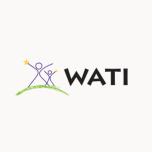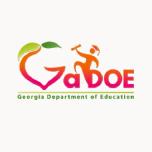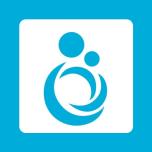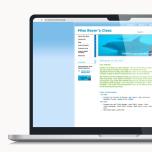March Checklist
Consider this technology month. You are absolutely in the thick of preparing for administering the STAAR Alternate 2 assessment, so you probably have little time for anything else. Still, that’s why this is a good month for technology. We’re all at varying levels of being tech-savvy, but that doesn’t have to stop you. It needs to be done at some point, but because it will be what you make of it, it’s a good project to work on this month based off the time you can allocate. Set your own pace and do what you can fit into your schedule. You may find, by the end of the month, that you’ve surprised yourself.
Create a Teacher Webpage
A teacher webpage can be a very important tool in communicating with parents throughout the school year. In the spring, parents of upcoming students may also be searching to learn more about their student’s future teacher. The more they know, the less nervous they will be about their student’s transition. Many districts offer, encourage or mandate a teacher webpage, and those that do usually leave it up to the campuses to choose the format and guidelines. You can get the details from your administrator. As a reminder, on your webpage you must be mindful of confidentiality and the privacy of students and their families required under The Family Rights and Privacy Act (FERPA).
Example
Here are a few ideas to help build your site:
About Me
Parents want to know who you are, so you can include your educational background, certifications, pictures, and other appropriate information about you as an educator. If you sponsor a club, talk about it!
Calendar
Include a calendar of important dates and times. This will save you countless emails repeating yourself to different people.
Instructional Resources
Because many special needs students do not do pencil/paperwork, parents are constantly looking for educational websites and apps for their children. Consider creating a page that offers links to these sites/apps. If your students have access to certain websites at school with logins (ex: iStation, Rethink, Think Through Math, Bookshare, etc.), you can link it to this page and give parents their child’s username and password so that they can access it from home.
Classroom Newsletters
If you send home hard copies of classroom newsletters, you can save paper, ink, and the worry of it not making its way home by loading a digital copy to this page for parents to read or print at their leisure.
Beginning of the Year
There is SO MUCH information to give parents at the beginning of the year, especially if they are new to your campus or classroom. Use this page to provide parents with information and procedures regarding needed supplies, ID cards, open house, lunch, P.E. uniforms (if applicable), the classroom phone and other good ways to contact you, parent drop-off/pick-up, the bus, the restroom, etc.
Meetings
It may not occur to some special education teachers, especially secondary teachers working with students who have been in special education for quite a while, but many parents aren’t entirely clear on the different kinds of meetings that campuses have. You may have run into this if a parent has requested an ARD over something that could have been handled in a parent/teacher conference. The difference could be just a whole lot of paperwork.
Consider a page that explains the different kinds of meetings that are held in special education. Explain what is addressed at parent/teacher conferences, what is discussed at reviews, what is discussed at annual reviews, what is discussed at re-evaluation meetings, what is discussed at a manifestation determination review, etc. This may save you time in the long run.
Ending the School Year
Again, the end of the school year comes with a lot of information that needs to be disseminated, particularly for transitioning students. Parents of students going to middle school and high school are particularly nervous. Provide information about transition, including contact information for people on the next campus. You may not be able to answer all of their questions about the future campus, but there is someone who can. Parents of special needs students may be concerned about how lunch, restroom, or hall transitions work at the next campus. If you meet with the teachers on the middle school or high school campus to get this information before parents ask, you can provide their answers to frequently asked questions your page.
Community Resources
At the end of the school year, some parents of students with special needs begin asking questions about programs for the summer. If you do some research into programs in your area, you can post links, and when parents ask, you can direct them to this page. Developing a successful working relationship with families contributes to the best educational outcomes for students with complex needs. These relationships should be tailored to each student and his or her family, and they require mutual respect and frequent communication. Many educational and behavioral objectives taught in school are likely to be achieved and maintained with support in the home environment.
Become More Familiar with Assistive Technology
How familiar are you with Assistive Technology? Assistive technology devices are identified in the IDEA 2004 as “any item, piece of equipment or product system, whether acquired commercially off the shelf, modified, or customized, that is used to increase, maintain, or improve the functional capabilities of children with disabilities. The term does not include a medical device that is surgically implanted, or the replacement of such device.” In simpler terms, assistive technology is anything that your student needs to better access the curriculum. It could be a pencil grip, a magnification device, a switch, a voice output device, a piece of software, or a myriad of other items. Many times teachers are unaware of the types of supports that are available.

Assistive Technology
Wisconsin Assistive Technology Initiative (WATI)

Assistive Technology
Georgia Department of Education

Assistive Technology
Video: Understanding Assistive Technology: Simply Said

Assistive Technology
Video: Assistive Technology: Enabling Dreams
Assess Students' Needs
Special needs teachers spend a lot of time with their students, and their world can become very small as they get used to the way their students communicate and the way they check for understanding. We can become so comfortable, and in fact, that we can lose track of the fact that others might not understand our students the way we do. It’s always important to remember that other people do not share the time with our students that we do, and that others might not understand our students the way we do.
We check for understanding innately as we read our students’ eyes, movements, and responses. Most of us check for understanding and make adjustments without even realizing we’re doing it. We see that a student may not be understanding something, and we grab another visual support or supplemental aid to see if it makes a positive difference. We usually do this informally, on the spot, to meet our students at the level at which they need support.
One teacher relates, “In working with many special education teachers who provide this kind of informal check for understanding, I learned how to fine-tune an innate understanding of my students and how to best support them. The only thing was, this system was all about myself and the student. I saw that they were in need, I grabbed something from my drawer that I thought might help, and I met their immediate need. There is nothing wrong with this, and in fact, it’s possibly one of the most parental connections you can have with your student; you see your student struggling, you spin your metaphorical rolodex, and you provide a support they need. This kind of on- your-toes problem solving is necessary in special education.”
Keep in mind that this takes a tremendous amount of time, and if you have not documented what supports you have tried, and have spent so much time providing, it doesn’t help your students’ future teachers in providing the student with what he or she may need. Important time could be wasted on future teachers having to do the same troubleshooting.
There’s an article by Todd Finley titled “Dipsticks: Efficient Ways to Check for Understanding.” In this article, the author discusses the use of checking for understanding to assess students’ needs. In the article, Robert E. Stake describes assessment in the metaphor, "When the cook tastes the soup, that's formative; when the guests taste the soup, that's summative." Summative assessments are an important tool for the majority of students, and they are an important tool for our students as well. Because students with significant cognitive disabilities rarely take state-mandated benchmarks, we do not get a lot of formal information that can be gathered from summative assessments.
We can create our summative assessment, though, using teacher-created rubrics for different areas that we would like our students to progress throughout the year.
Example
For example, in the areas of basic reading or math skills, rubrics can be created to monitor progress. We can revisit the rubric at different increments of time throughout the year to see how each student is progressing.

Dipsticks: Efficient Ways to Check for Understanding
Final Thought - Enjoy Every Day
You’re three-quarters of the way done with the school year! Do what you need to do personally to enjoy every day with these amazing students, remember to tell campus staff “No” if you don’t have the time for extra projects, and focus on keeping your momentum steady and paced for the last quarter of the year.

